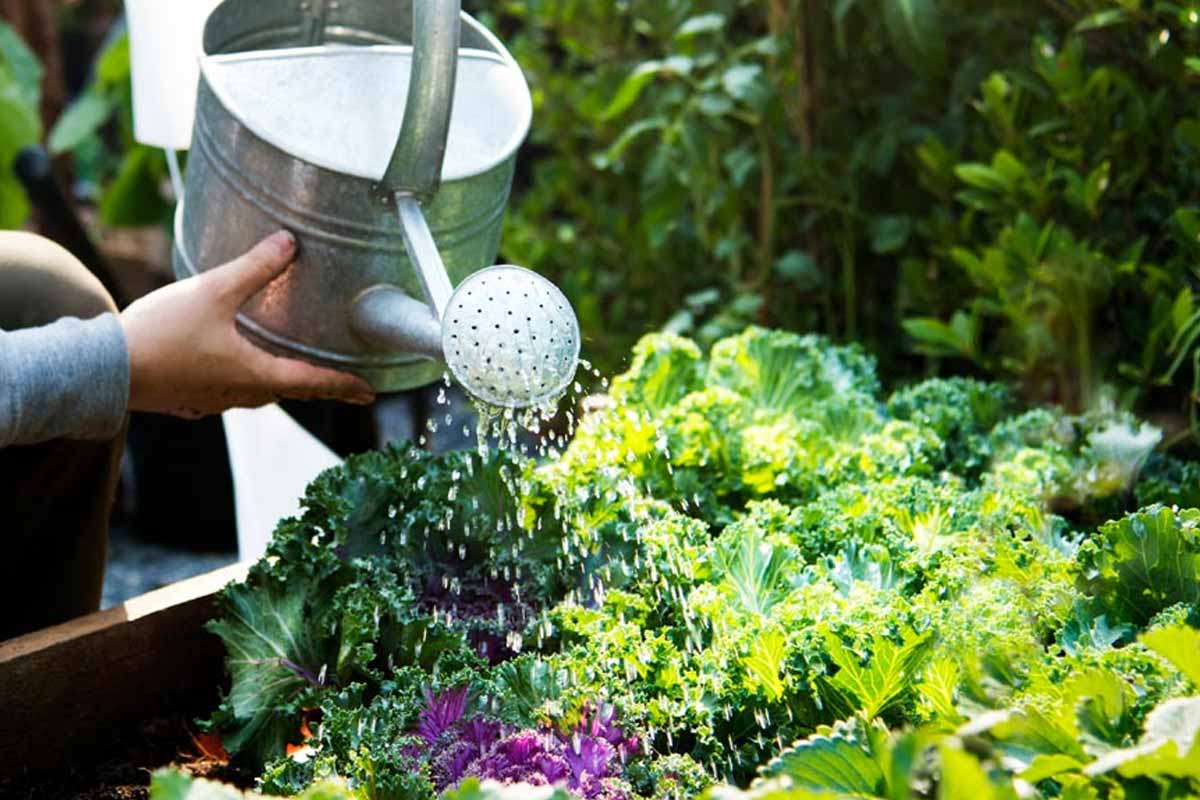The sun looks friendly at noon, yet it’s the worst partner for plants. Water given at that hour vanishes fast, stress rises, and growth slows. Early and late hours do the heavy lifting, because moisture reaches the root zone instead of the air. Your garden stays resilient when timing, technique, and small routines align, while leaves avoid scorch and soil holds moisture longer. The rules are simple, practical, and easy to turn into daily habits you’ll actually keep.
Why peak sun sabotages your garden watering
Midday heat drives fast evaporation, so moisture rarely reaches the roots. Shallow wetting also encourages weak root systems that suffer once the surface dries. Heat-shock happens when cold water hits hot foliage, adding stress. Leaves may look refreshed, yet the root zone stays thirsty, which slows recovery after bright, windy hours and invites wilting by late afternoon.
Peak sun spans roughly 10 a.m. to 4 p.m. During that window, a hose session becomes a time sink and a water waster. According to Morris Hankinson of Hopes Grove Nurseries, most of that moisture disappears before plants can use it. The result is poor uptake, tired foliage, and a higher chance of scorch marks that linger through the week on thin leaves.
If you can’t shift your schedule and a plant is clearly struggling, go ahead and water—deeply—right at the soil line. That emergency top-up keeps roots alive until a cooler window returns. Aim the stream under the canopy, avoid splashing, and let water soak slowly. A quick sprinkle doesn’t help; a steady soak restores the root ball and buys time.
Best time of day to water, step by step
Early hours win because the soil is cool and thirsty after the night. Ali Lijee of TreeMend says before 9 a.m. is ideal, and the advice holds through hot spells. With lower sun, droplets dry from leaves while the root zone drinks, which reduces disease pressure and keeps moisture available as the day warms.
Mid-morning can still work in cooler seasons, as evaporation slows and soil accepts more water. Evening helps on very warm days, because plants can absorb moisture overnight. Slug issues change that choice, since the damp surface lets pests roam. If slugs are a problem, shift evening sessions to mornings to limit their activity and reduce damage.
Build a simple cadence around household habits, so you remember the task without alarms. A wake-up 15 minutes earlier leaves enough room for a calm pass through beds. Many people pair watering with a cup of tea, so the routine feels pleasant and consistent. That steady rhythm protects the garden through heat waves and travel-heavy weeks.
Smart techniques that protect roots and leaves
Water the soil, not the foliage. Roots need moisture deep in the profile, so send it there. A slow hose, a watering wand, or a drip line wins over fast sprays, because droplets sink instead of bouncing. Deep sessions train roots to grow down, which buffers heat, wind, and short dry spells far better than frequent light sprinkles.
Leaf wetness raises disease risk, especially when nights run cool and still. While many myths exaggerate “magnifying glass” burn, droplets can contribute to scorch on tender tissue during harsh sun. Wipe excess water from large leaves after you irrigate. That quick pass limits blemishes, keeps airflow moving, and pairs well with a tidy snip of spent or crowded growth.
Avoid standing water in trays or compacted spots, since roots suffocate when pores stay full. If you just irrigated and see puddling, stop and wait for infiltration. Then return with a lighter pass. This pacing improves uptake and reduces runoff. It also keeps fertilizers in place, because nutrients stay where roots can reach them in the garden soil.
Numbers, caveats, and what experts actually say about the garden
The clear “no” on peak hours has useful exceptions. A plant in distress needs help even at noon. In those moments, target the base and soak. That approach cools the root zone first, which matters more than wet leaves. A single deep rescue beats two shallow, misty sprays that never reach the core.
Times guide the plan while weather refines it. Hot, windy conditions call for longer sessions; cool, cloudy mornings need less. Track how quickly the top two inches dry, then adjust. When unsure, dig a small test hole beside the root ball. If it’s damp below your first knuckle, delay. If it’s dry, water until the profile feels evenly moist.
Hankinson warns that sudden temperature shifts can stress foliage, so moderate the flow and avoid icy water if possible. Lijee notes that evening watering shines in summer warmth because plants have hours to drink. Slug pressure flips that choice, and morning becomes the safer slot. The rule bends, yet the logic—deep moisture to roots—stays fixed.
Simple daily choices that keep plants thriving through heat
Water reaches roots when you pick cooler hours, move slowly, and aim at the soil. Evaporation drops, disease pressure eases, and growth keeps pace with heat. With a short routine, a bit of mulch, and deep, even sessions, the entire space stays resilient. Your garden repays that timing with steady color, stronger roots, and fewer midsummer setbacks.
